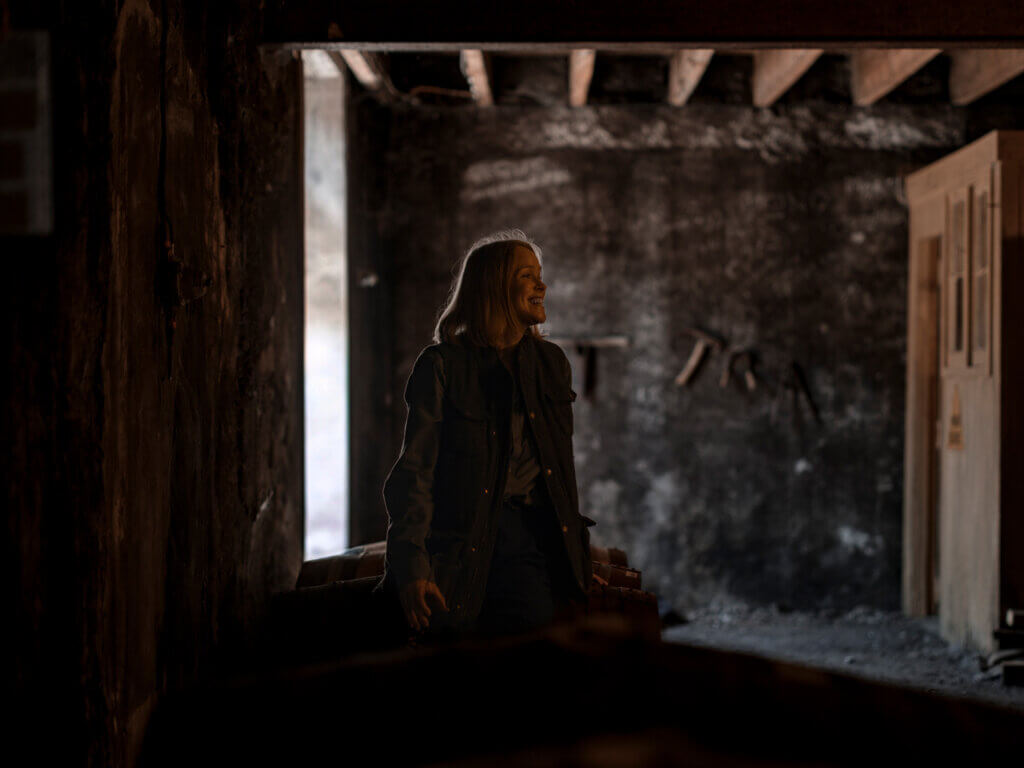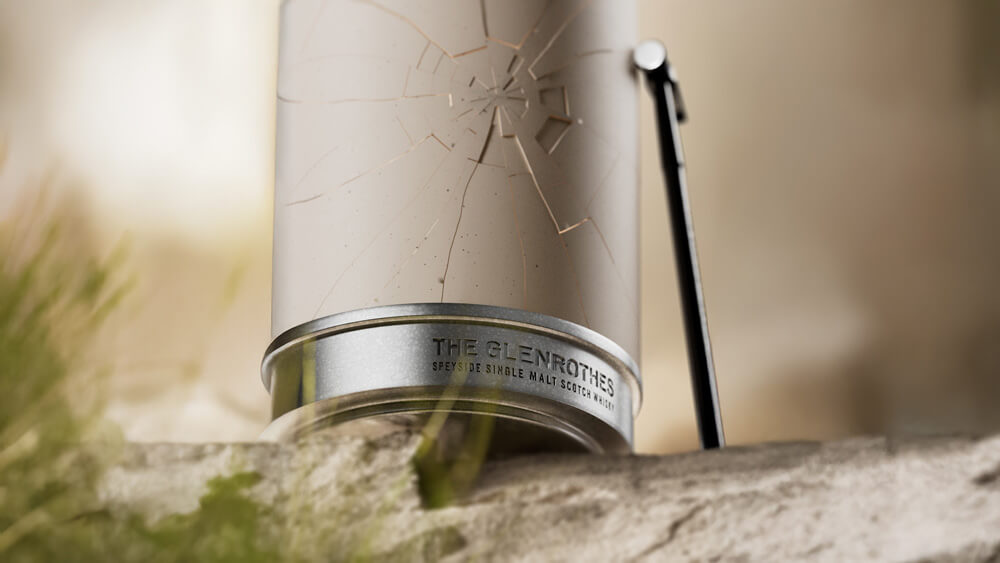The whisky industry has long been defined by tradition, heritage, and reverence for established practices. Yet Anna Lisa Stone, Head of Creative at The Glenrothes, is challenging these conventions with a boldness that would make the distillery’s 1879 founders proud. Her latest creation, The 51, requires owners to physically destroy its packaging to access the liquid within—a concept that has redefined luxury whisky presentation and sparked industry-wide conversation about the future of premium spirits.

Stone’s background in branding, design, and creative direction has positioned her as one of the most innovative voices in Scottish whisky today. Under her creative leadership, The Glenrothes has successfully bridged the gap between time-honoured craftsmanship and contemporary artistic expression, creating products that resonate with both collectors and connoisseurs. Her philosophy that whisky making shares fundamental parallels with art—particularly in how rules are both respected and challenged—has driven the brand’s distinctive identity and storytelling approach. In this exclusive interview with The Executive Magazine, Stone reveals the creative vision behind The 51’s groundbreaking presentation, explores the delicate balance between tradition and innovation, and discusses how natural inspiration from the Speyside estate continues to shape the brand’s future direction.
The Glenrothes recently unveiled The 51, a matured whisky that requires breaking its packaging to access. What was the creative vision behind this revolutionary approach to luxury whisky presentation?
“The creative vision behind The 51 began with a question: could we extend the experience of this whisky beyond the glass? The oldest whisky ever released by The Glenrothes, The 51 embodies the distillery’s essence – what our Master Whisky Maker calls “Strength in Fragility” – reflecting both the enduring delicacy of the spirit and also the resilience of our founders. The wild orchids that grow on The Glenrothes Estate became the symbol of this idea, fragile yet tenacious; evolved to be unique to a single pollinator or “keeper”.
“The presentation of The 51 tells that story by inviting you to become a participant in it. To retrieve their whisky, each “keeper” of The 51 must commit, like our founders did, and break open the Jesmonite column – each one cracking uniquely – turning an act of destruction into a personal, transformative experience that mirrors the whisky’s own journey.”

You’ve mentioned that whisky making shares parallels with art, particularly regarding rules and how one interacts with them. How does this philosophy manifest in The Glenrothes’ approach to crafting spirits?
“Art and whisky making are vastly different disciplines. But within both, I think the capacity for greatness begins with intent. Are you setting out to create an asset or an encounter? Are you trying to emulate existing successes or build from your own unique perspective? The 51 is a good example – Laura’s vision was to create a whisky that was the “orchid” of our collection: rare, ethereally fragrant and delicate – yet vibrant and robust. To achieve this, she brought together two exceptional casks, one representing “strength” and the other “fragility”. They just happened to be 51 Years Old. It’s a subtle but important distinction.”
The 51 is described as having a “strength in fragility” inspired by wild orchids growing on the Speyside estate. How important is the natural environment of the distillery in shaping both the physical product and its creative identity?
“The Glenrothes is tied, inextricably, to the land. We are one of the few distilleries that still use our original natural water source – drawn from deep wells underneath the Glen of Rothes forged during the Ice Age. This exceptionally soft water is fundamental to the bright, fruity and delicate newmake spirit that is the backbone of our whisky. It is only fitting that the surrounding landscape should similarly shape the brand’s identity, from the colours of our core whiskies – drawn from lichen, bluebells and ferns found in the glen – to the topographic contours at the heart of their packaging. A sense of place is woven through the stories of all our releases, not least the wild orchids of The 51.”
With only 100 bottles available globally at £37,000 each, The 51 represents significant exclusivity. How do you balance creating products for collectors while staying true to the founding vision of “the world’s most elegant whisky”?
“Our founders set out to create the world’s most elegant whisky. Ironically, at the turn of the 20th century, their world was one of blending and the whisky they made then would never have reached the age of the casks we steward today. Yet, without knowing it, they created the foundations of a spirit that not just withstands prolonged ageing – it excels with it. The older a whisky gets, the less of it there is – and it is the combination of scarcity and quality that drives the exclusivity of whiskies like The 51.
“Whether that reserves those whiskies for “collectors” is a debate in itself – the implicit challenge of The 51 is to crack it open, literally, and enjoy the dram. Regardless, releasing very rare old whiskies doesn’t feel like a contradiction of our founders’ vision; rather, in the case of The 51, it is a stunning (if unpredicted) part of their legacy.”
The concept of transforming broken packaging into Kintsugi art creates a complete experience that extends beyond consumption. What inspired this circular creative approach?
“As a whole, Kintsugi, the Japanese art of repairing broken pottery with precious metal, beautifully mirrors the philosophy of whisky making – embracing imperfection while seeking refined beauty. For The 51, reassembling the broken pieces of the column into a vase is meaningful on several levels. At its core, it is a symbol of transcendence – finding beauty in brokenness – a quiet nod to the achingly human example of our founders who persevered through unimaginable pressures to bring the distillery into being.
“It’s also an abstract manifestation of the wild orchids, the golden cracks unique to the individual “keeper” who committed to retrieve their whisky. And, finally, it’s an object of remembrance – a vessel to carry the story of your own encounter of The 51, long after the whisky is gone.”
Laura Rampling, your Master Whisky Maker, speaks of moments “when patience, nature, and craft align perfectly.” How do you translate these whisky-making principles into your creative strategy for the brand?
“Laura’s words could well apply to the creative strategy of the brand as well as the whisky. Establishing the creative direction for any brand takes time, and The Glenrothes will take all the time it needs. Nature continues to be our muse, and laying bare its influence on our whisky remains a crucial part of the creative task. Integrity of craft – and, just as importantly, ideas – is the glue that binds everything together… with whisky at the heart. Always.”
The whisky industry has historically been quite traditional. What creative challenges have you faced when introducing concepts like The 51’s destructible packaging to the market?
“Presenting whisky in a bottle is great. Any deviation from that is an attempt to evolve, elevate or extend the experience, whether admitted to or not. And that’s great too, especially when whiskies often have beautiful and complex stories to tell. Traditionally, those attempts have taken the form of bigger and more elaborate boxes. The destructible packaging of The 51 is simply another attempt – albeit in a new guise – to evolve and extend the whisky experience. It offers an immersive way to encounter the story of The 51 beyond the glass and encourages those who possess the whisky to taste the beautiful liquid. The whole idea could be dismissed as a gimmick, which would be missing the point but par for the course. Yet for the whisky lover who values symbolism, story and meaning as much the wonderful spirit, The 51 will find a cherished home.”


